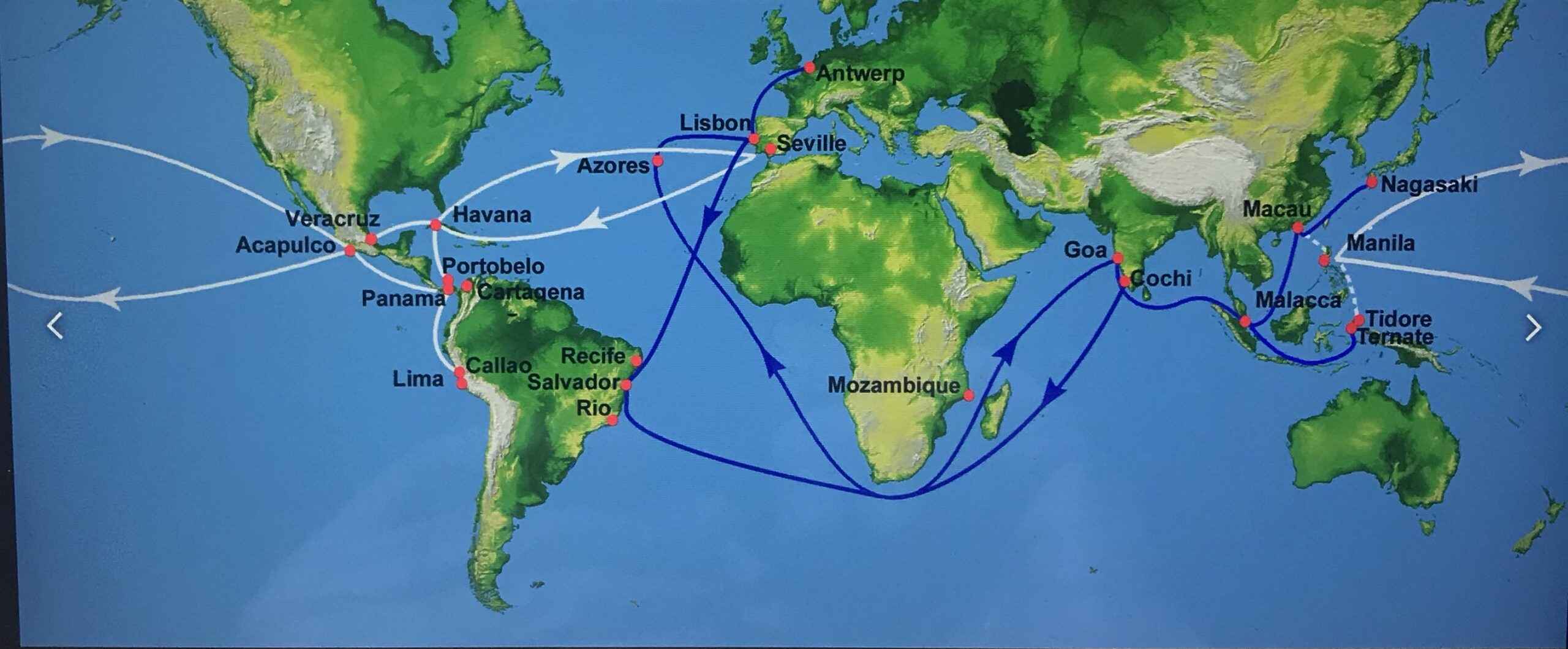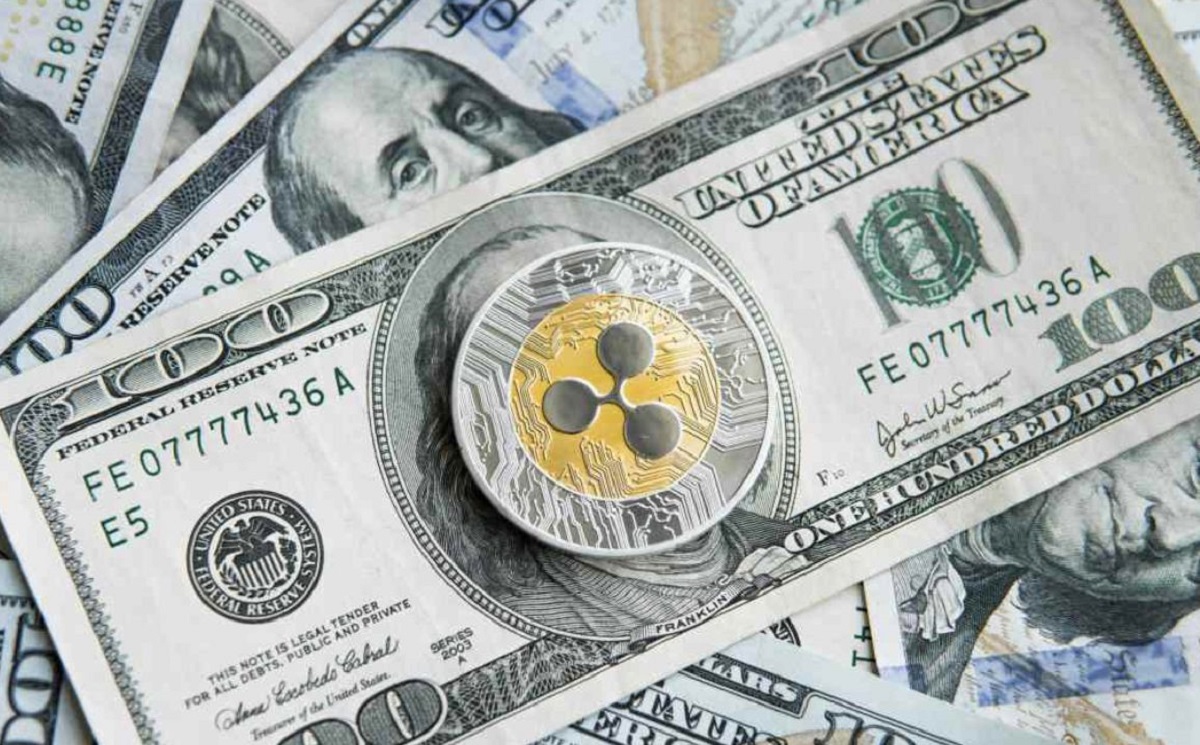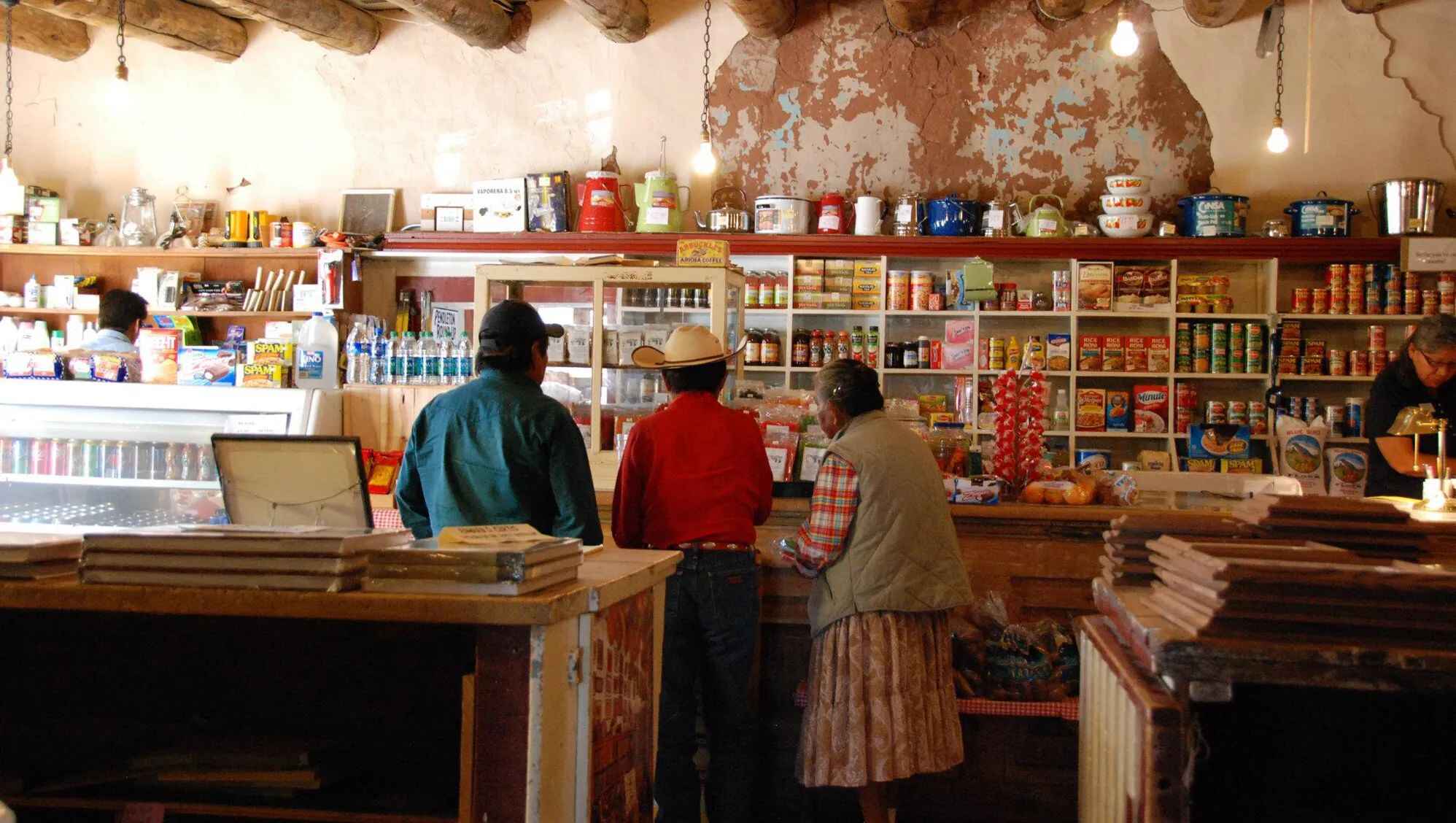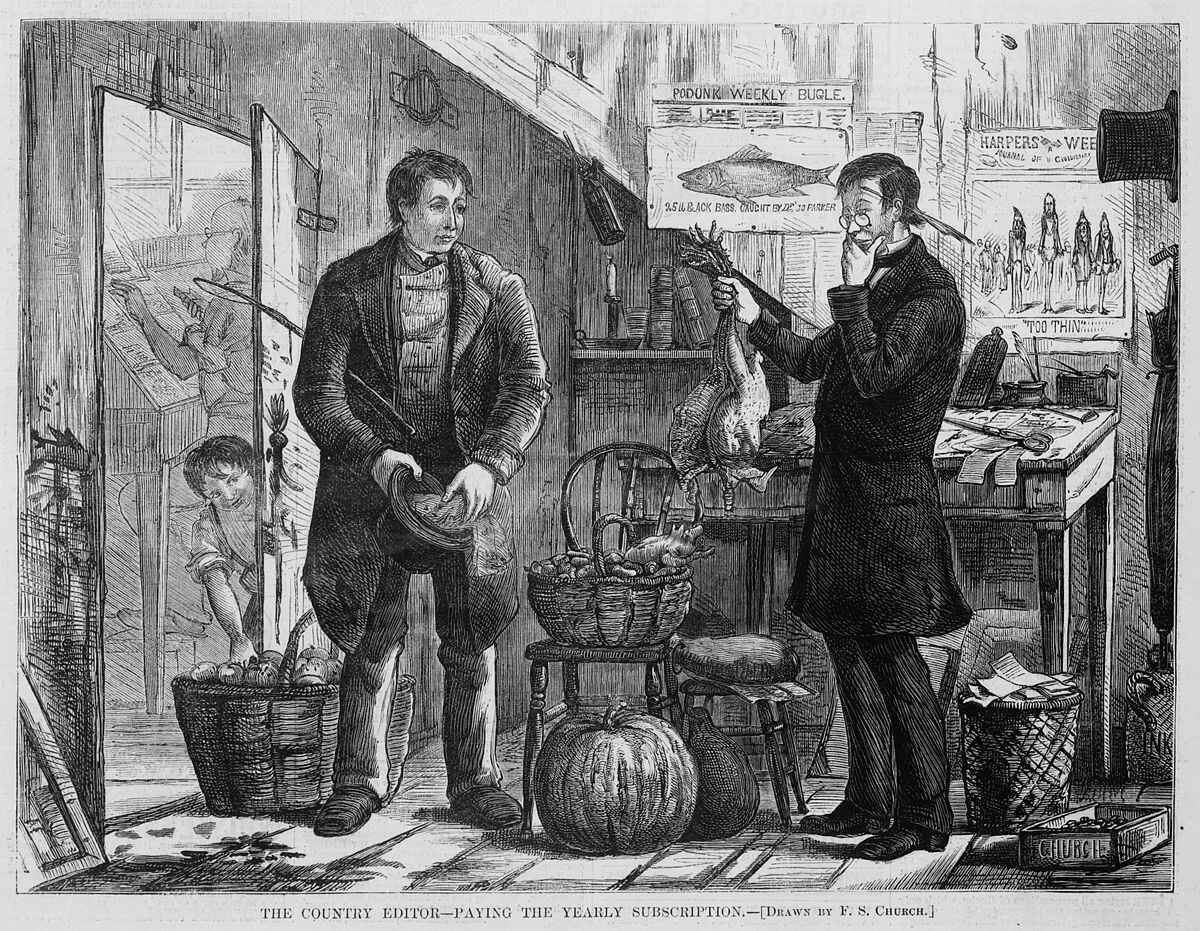Introduction
When examining the history of global trade and colonization, it is impossible to overlook the pivotal role that Spain played in establishing trading posts in Asia. During the Age of Exploration, Spain embarked on a quest for global dominance and sought to extend its influence far beyond its own borders. The lure of Asia, with its abundant resources and exotic goods, proved to be impossible for the Spanish to resist.
Spain’s decision to establish trading posts in Asia was driven by a combination of economic, political, and religious motivations. These trading posts not only provided Spain with direct access to the lucrative spice trade but also served as strategic military and naval bases in the region.
In this article, we will delve into the reasons why Spain set up trading posts in Asia and explore the significance of these posts in the broader context of global trade during that era. We will examine the establishment of Spanish footholds in the Philippines and how they served as a base for further expansion into other territories in Asia.
The article will also delve into the economic gains that Spain enjoyed through its involvement in the spice trade and the political and religious motivations behind their presence in Asia.
By understanding the factors that drove Spain’s establishment of trading posts in Asia, we can gain insights into the broader historical context and explore the impact of Spanish colonization on the region.
Spain’s quest for global dominance
During the 15th and 16th centuries, Spain emerged as one of the most powerful nations in Europe. Driven by a desire for wealth, prestige, and influence, the Spanish embarked on a remarkable period of exploration and colonization. Led by explorers such as Christopher Columbus, Ferdinand Magellan, and Juan Sebastian Elcano, Spain sought to expand its dominion beyond its borders and establish a global empire.
The primary motivations behind Spain’s quest for global dominance were economic, geopolitical, and religious in nature. Spain, like other European powers, was keen on finding new trade routes to bypass the Ottoman Empire’s control of the overland spice trade. Additionally, the Spanish sought to gain access to the wealth of Asian markets and establish monopolies on lucrative commodities such as spices, silk, and precious metals.
Furthermore, Spain’s pursuit of global dominance was part of a larger geopolitical strategy to counterbalance the influence of other European powers, particularly Portugal and the rising Dutch Republic. By establishing colonies and trading posts around the world, Spain aimed to solidify its position as the preeminent global power.
Religion also played a key role in Spain’s quest for global dominance. The Catholic Church, heavily intertwined with the Spanish monarchy, saw the expansion of Christianity as a divine mission. Spanish explorers and missionaries were driven by a desire to spread the Catholic faith to new territories and convert indigenous populations.
Through a combination of military might, exploration, and colonization, Spain managed to build a vast empire that spanned continents. Spanish conquistadors claimed territories in the Americas, Africa, and Asia, establishing a global presence that fueled Spain’s economic and political ambitions.
However, the quest for global dominance was not without its challenges. Competition from other European powers, resistance from indigenous populations, and the logistical difficulties of exploring and governing distant lands made Spain’s mission a complex and arduous endeavor.
The lure of Asia
Asia, with its vast resources, rich cultural heritage, and exotic goods, held an irresistible allure for the Spanish explorers and traders of the 16th century. The tales of the legendary Silk Road and the promise of immense wealth drew the Spanish further eastward in their quest for global dominance.
One of the main attractions of Asia for the Spanish was the lucrative spice trade. At that time, spices such as pepper, cinnamon, cloves, and nutmeg were highly prized and commanded exorbitant prices in Europe. The demand for these exotic spices was driven by their use as flavor enhancers, medicinal remedies, and status symbols.
By establishing trading posts in Asia, Spain aimed to bypass the monopolistic control of the spice trade by the Ottoman Empire and gain direct access to the source of these valuable commodities. Spain saw the opportunity to establish their own trade routes and secure their dominance in the highly profitable spice market, which would greatly enrich their coffers and strengthen their economy.
Aside from the economic incentives, the allure of Asia also lay in its cultural and intellectual riches. The Spanish were fascinated by the vibrant and diverse cultures, ancient civilizations, and intricate artistic traditions that they encountered in Asia. Explorers and scholars sought to study and document the languages, customs, and religions of the regions they encountered, opening up new avenues for cross-cultural exchange and intellectual discovery.
Furthermore, Asia offered vast potential for territorial expansion, allowing Spain to consolidate and extend its global empire. The strategic location of Asian territories provided opportunities for military and naval dominance, enabling Spain to project its power and protect its interests in the region.
Overall, the lure of Asia for the Spanish was multifaceted—economic gain, cultural curiosity, intellectual exploration, and territorial expansion all played a role in driving Spain to establish trading posts and increase its presence in the region.
Establishing footholds in the Philippines
One of the key territories where Spain established its trading posts in Asia was the Philippines. The archipelago, strategically located at the crossroads of major trade routes, became an important foothold for the Spanish in their quest for global dominance.
The Spanish arrival in the Philippines can be traced back to 1521 when Ferdinand Magellan landed on the island of Homonhon. Magellan’s voyages marked the beginning of Spanish colonization in the region, as he claimed the islands for Spain and converted some of the indigenous population to Christianity.
However, it was not until the arrival of Miguel López de Legazpi in 1565 that Spain established a permanent presence in the Philippines. Legazpi founded the first Spanish settlement in the archipelago, named it “San Miguel,” and established it as the capital, which would later become known as Manila.
The establishment of Manila as the Spanish capital in the Philippines was a strategic move that allowed for greater control over trade and maritime activities in the region. Manila Bay provided a safe harbor for Spanish galleons, facilitating the transportation of goods between Asia, the Americas, and Europe.
Under Spanish rule, the Philippines became a major center for trade and commerce. The Spanish saw the islands as a crucial link in their global trading network, connecting the rich resources of Asia with the growing markets in Europe. The Manila galleon trade, established in 1565, became a key artery of Spanish influence and a vital source of wealth for the Spanish monarchy.
With the establishment of Spanish trading posts in the Philippines, the Spanish were able to assert their dominance in the region and expand their control over neighboring territories. Alongside the economic benefits, Spanish missionaries played a significant role in spreading Christianity throughout the archipelago, converting large portions of the population and leaving a lasting impact on Filipino culture and society.
The Philippines served as a launching pad for further Spanish expansion into other parts of Asia, with Spanish expeditions reaching as far as Japan and China in search of new opportunities for trade and colonial expansion.
In summary, the establishment of Spanish trading posts in the Philippines provided a strategic foothold for Spain in its quest for global dominance. This marked the beginning of centuries-long Spanish presence in the region, leaving a lasting impact on the history, culture, and economy of the Philippines.
The importance of the Manila galleon trade
The establishment of the Manila galleon trade in the 16th century played a pivotal role in Spain’s trading posts in Asia and had significant economic, cultural, and geopolitical importance.
The Manila galleon trade was a maritime route that connected the Philippines with Mexico, forming a crucial link in the global trade network forged by Spain. Spanish galleons, heavily fortified ships, sailed annually between Manila and the port of Acapulco, carrying valuable goods back and forth. This maritime trade route became known as the “China-Philippines-Mexico” route, as it involved the exchange of Chinese goods in Manila for silver from Mexico.
The trade between Manila and Mexico was immensely profitable for Spain. The Spanish galleons filled their holds with coveted Asian commodities such as silk, spices, porcelain, jewels, and lacquerware, which were highly sought after in the European market. The arrival of these goods in Mexico brought immense wealth to Spanish merchants and traders, who would later send the silver from Mexico back to Manila to purchase more goods for the next voyage.
The Manila galleon trade had a profound impact on the economies of both the Philippines and Mexico. Manila rapidly grew into a bustling trading hub, attracting merchants from all around the world. The influx of wealth and goods from Asia fueled economic growth and stimulated local industries, such as shipbuilding, textile production, and manufacturing.
Furthermore, the Manila galleon trade had significant cultural implications. The exchange of goods, ideas, and beliefs between Asia, Europe, and the Americas led to a remarkable cultural fusion. Filipino culture was significantly influenced by Spanish and Chinese traditions, while Mexican society absorbed Asian influences through the goods that arrived through the Manila galleon trade. The trade route facilitated a vibrant exchange of languages, cuisine, religious practices, and artistic styles.
Geopolitically, the Manila galleon trade solidified Spain’s presence and power in the Asia-Pacific region. The Spanish controlled the major trading ports and bolstered their naval and military capabilities to protect their interests. The galleons’ voyages also served as a deterrent to other European powers, discouraging them from challenging Spain’s dominance in the region.
In summary, the Manila galleon trade was of paramount significance to Spain’s trading posts in Asia. It brought immense wealth, stimulated economic growth, fostered cultural exchange, and solidified Spain’s influence in the Asia-Pacific region. The legacy of this trade route can still be felt today in the shared history, cultural connections, and economic ties between the nations involved.
The creation of Spanish trading posts in Asia
The creation of Spanish trading posts in Asia was a critical component of Spain’s strategy to establish a global empire and dominate the lucrative trade routes. These trading posts served as strategic bases from which Spain could expand its influence, control the flow of goods, and project its power in the region.
One of the earliest Spanish trading posts in Asia was established in the Philippines, with Manila becoming the primary hub for Spanish activities in the region. The Spanish presence in the Philippines allowed for the control of trade flows between Asia, the Americas, and Europe, ensuring the monopoly of valuable goods and resources.
Apart from the Philippines, Spanish trading posts were also established in other parts of Asia, such as Macau, Malacca, and Goa. These trading posts were strategically located along major trade routes, facilitating the exchange of goods between Asia, Europe, and the Americas.
The establishment of these trading posts brought numerous benefits to Spain. First and foremost, they provided Spain with direct access to the highly lucrative spice trade, which was in high demand in Europe. The spice trade had immense economic value, as spices were used not only for culinary purposes but also as medicinal remedies, preservatives, and perfumes.
Moreover, the Spanish trading posts in Asia became centers of economic activity, attracting merchants from different parts of the world. These trading posts became bustling markets, where goods from various regions were traded, leading to a flourishing exchange of commodities and cultural exchange.
In addition to economic gains, the Spanish trading posts also served as vital military and naval bases. Spain recognized the strategic importance of these posts in maintaining control over trade routes, protecting their interests, and countering rivals such as the Portuguese and the Dutch.
Furthermore, the establishment of Spanish trading posts in Asia allowed for the spread of Christianity through missionary activities. The Spanish missionaries, often accompanying explorers and traders, sought to convert the local populations to Catholicism. This religious element was an essential aspect of the Spanish presence in Asia and furthered Spain’s goals of extending its influence over both economic and spiritual realms.
In summary, the creation of Spanish trading posts in Asia was a crucial element of Spain’s global imperial ambitions. These posts provided economic benefits, strategic military advantages, and opportunities for cultural and religious exchange. The network of Spanish trading posts in Asia played a pivotal role in shaping the region’s history and leaving a lasting impact on its economies, societies, and cultures.
Expanding into new territories
As Spain established its trading posts in Asia, the thirst for exploration and expansion led to a desire to venture into new territories and further extend their influence. Spanish explorers set their sights on uncharted lands, driven by a combination of curiosity, ambition, and the quest for wealth and power.
One notable expedition was that of Hernán Cortés, who set out to explore and conquer the Aztec Empire in present-day Mexico. Cortés and his men arrived in Mexico in 1519 and eventually succeeded in overthrowing the Aztec ruler, Montezuma II. This conquest provided Spain with immense wealth, including vast amounts of gold and silver, and expanded its empire into the Americas.
Inspired by the success of Cortés, other Spanish explorers embarked on their own journeys of discovery. Francisco Pizarro led an expedition to the Inca Empire in South America, resulting in the downfall of the Inca civilization and the annexation of their territories. These conquests added to the wealth and power of the Spanish empire.
Not limited to the Americas, Spanish explorers also set their sights on Asia. In search of new trading partners and territories, expeditions were sent to regions such as Japan and China. Although Spain faced challenges in these ventures, including political resistance and cultural differences, they succeeded in establishing limited trade connections and leaving a mark on the region’s history.
One notable example is the establishment of Spanish trading posts in Japan. Francis Xavier, a Jesuit missionary, played a crucial role in introducing Christianity to Japan and establishing ties between Spain and the Japanese rulers. However, due to political and religious conflicts, the Spanish presence in Japan ultimately diminished, but not without leaving cultural and religious influences on the country.
In their pursuit of new territories, Spanish explorers and conquistadors shaped the history and boundaries of the Spanish empire. Their expeditions expanded the reach of Spanish influence, colonization, and trade networks, solidifying Spain’s position as a global power.
However, Spain’s ambitions of territorial expansion were not without controversy. The methods employed by the Spanish, such as forced labor, enslavement, and the destruction of indigenous societies, have been widely criticized. The consequences of Spanish colonization and the imposition of Spanish culture and religion on native populations continue to impact the countries and communities to this day.
In summary, the Spanish desire for exploration and expansion led to the establishment of new territories in the Americas, Asia, and beyond. Spanish explorers and conquerors played significant roles in shaping the boundaries of the Spanish empire, leaving an indelible mark on the history, cultures, and legacies of the lands they encountered.
Economic gains and the spice trade
One of the primary motivations behind Spain’s establishment of trading posts in Asia was the opportunity for economic gain, particularly through the highly lucrative spice trade. The quest for spices prompted Spain to venture into new territories and establish a dominant presence in the global trade networks of the time.
The spice trade played a crucial role in driving European exploration and colonization, with spices such as pepper, cinnamon, cloves, and nutmeg being highly valued commodities. These exotic spices were not only used to enhance the flavors of food and drinks but also had medicinal, preservative, and aromatic properties.
Spain, like other European powers, sought to control and monopolize this profitable trade. By establishing trading posts in Asia, Spain aimed to bypass the existing trade routes controlled by the Ottoman Empire and gain direct access to the source of these valuable commodities.
The spice trade brought immense wealth to Spain. The Spanish merchants involved in this trade profited greatly from the high demand and scarcity of spices in Europe. The prices of spices were astronomical, which allowed the Spanish to command significant profits as intermediaries between the Asian producers and the European consumers.
Additionally, the establishment of Spanish trading posts in Asia opened up new avenues for commerce and stimulated economic growth. The trade networks created by the Spanish presence brought about a flourishing exchange of goods, not only of spices but also of other highly sought-after commodities such as silk, porcelain, and precious metals.
The economic gains from the spice trade fueled Spain’s position as a global economic power. The wealth generated through this trade contributed to the growth of the Spanish economy, financed military campaigns and expeditions, and funded artistic and cultural endeavors that reflected the grandeur of the Spanish Empire.
It is important to note that the spice trade was not without its challenges. The long and perilous journey from Asia to Europe exposed traders to various risks, including piracy, shipwrecks, and political conflicts. The desire to secure this trade and protect their interests in Asia led Spain to invest heavily in the fortification of their trading posts and the development of a powerful navy.
In summary, the spice trade played a significant role in driving Spain’s establishment of trading posts in Asia. The trade in spices brought substantial economic gains to the Spanish Empire, fueled its economic growth, and solidified its position as a global trading power. The pursuit of these valuable commodities shaped the course of history and had a lasting impact on the economies of both Asia and Europe.
Political and religious motivations
Spain’s establishment of trading posts in Asia was driven not only by economic interests but also by political and religious motivations. These motivations played a significant role in shaping Spain’s expansion and dominance in the region.
Politically, Spain sought to increase its global influence and assert its power on the world stage. The establishment of trading posts in Asia allowed Spain to expand its territorial holdings and strengthen its control over key strategic locations. These posts served as important military and naval bases, offering Spain a platform from which to project its power and protect its interests.
Moreover, the Spanish presence in Asia was driven by a desire to counterbalance the influence of rival European powers, particularly Portugal and the rising Dutch Republic. By establishing trading posts and colonies in Asia, Spain aimed to challenge the dominance of these competitors and establish a foothold in the lucrative Asian markets.
Religion was also a driving force behind Spain’s presence in Asia. At the time, Spain was a fervently Catholic country, with close ties between the monarchy and the Catholic Church. The spread of Christianity was seen as a divine mission, and the conversion of indigenous populations to Catholicism was a key objective of Spanish exploration and colonization.
Spanish missionaries, often accompanying explorers and traders, played a crucial role in introducing Christianity to the regions they encountered. They sought to convert the local populations to the Catholic faith, establishing churches, schools, and missions in the newly colonized territories. This religious motivation helped justify Spain’s presence and actions in the eyes of both the Spanish authorities and the Catholic Church.
The religious fervor was intertwined with political objectives as well. Spain believed that by converting the indigenous populations to Catholicism, they would ensure their loyalty and strengthen their control over these territories. The spread of Christianity was seen as a means to establish a spiritual and cultural unity within the empire, further solidifying Spain’s dominance.
In their pursuit of political and religious objectives, the Spanish encountered resistance from indigenous populations who sought to maintain their own traditions, religions, and autonomy. This led to conflicts and resistance movements throughout the colonial period, as indigenous communities fought to preserve their way of life in the face of forced conversion and Spanish domination.
In summary, the establishment of Spanish trading posts in Asia was driven by a combination of political and religious motivations. Spain sought to extend its political influence, counterbalance rival powers, and spread the Catholic faith. These motivations shaped the course of history, leaving a lasting impact on the regions conquered by the Spanish Empire.
Conclusion
The establishment of Spanish trading posts in Asia marked a significant chapter in the history of global exploration, colonization, and trade. Spain, driven by economic gain, political ambitions, and religious fervor, sought to expand its influence, dominate trade routes, and spread Catholicism to new territories.
Spain’s quest for global dominance led them to the alluring lands of Asia, with its abundant resources, vibrant cultures, and lucrative spice trade. The establishment of trading posts, particularly in the Philippines, provided Spain with a strategic foothold in the region. Through these trading posts, Spain secured direct access to the prized commodities of Asia, such as spices and precious goods.
The Manila galleon trade emerged as a vital artery of Spanish influence and economic prosperity. This maritime route connected the Philippines with Mexico, facilitating the exchange of goods between Asia, the Americas, and Europe. The trade brought immense wealth to Spain and stimulated economic growth in both the Philippines and Mexico.
Behind Spain’s expansion into Asia were political motivations, driven by the desire to extend Spanish territory, control strategic locations, and counterbalance rival European powers. Religion also played a significant role, as Spain sought to spread Catholicism and convert indigenous populations in their overseas territories.
The establishment of Spanish trading posts in Asia was not without challenges. There were conflicts with indigenous populations, competition from other European powers, and logistical difficulties of governing distant lands. Nonetheless, Spain left a lasting legacy on the territories they colonized, shaping their history, culture, and economies.
The impact of Spain’s presence in Asia is felt even today. The influence of the Spanish language, customs, and religion can be observed in the countries formerly under Spanish rule. The trading networks established by the Spanish fostered cultural exchange, while the political and economic structures left behind continue to shape the modern landscape of these regions.
In conclusion, the establishment of Spanish trading posts in Asia signifies the ambition, power, and influence of Spain during the Age of Exploration. By pursuing economic gains, political dominance, and religious conversion, Spain forged a lasting connection between Europe and Asia, leaving an indelible mark on the regions they explored and colonized.

























